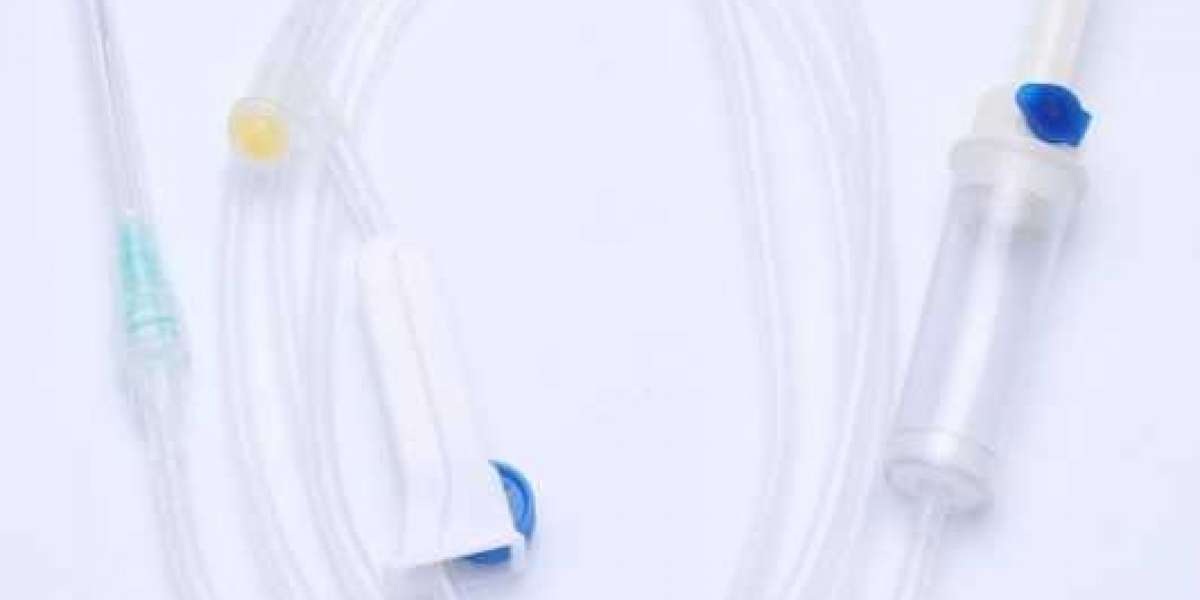In modern healthcare, medical professionals rely on various tools and equipment to provide the best care for patients. Among these critical tools are intravenous (IV) devices, which are used to deliver fluids, medications, and nutrients directly into a patient's bloodstream. One essential component of an IV setup is the IV tubing, which ensures the smooth and controlled flow of these substances. A key feature of IV tubing that has gained increasing significance in recent years is the Y connector IV tubing. This specialized connector plays an important role in enhancing the functionality, safety, and efficiency of IV therapies.
What is Y Connector IV Tubing?
Y connector IV tubing refers to a specific type of IV tubing that features a "Y"-shaped connector. This connector allows healthcare providers to administer multiple fluids or medications simultaneously through a single IV access point. Essentially, it splits the flow of the IV fluids into two or more lines, making it possible to administer multiple treatments at once without needing multiple IV access points or separate lines. This is particularly useful when patients require more than one type of medication or fluid infusion during their treatment.
The Y connector is typically made from flexible, medical-grade plastic that ensures the durability and reliability of the tubing. It is available in various sizes, allowing healthcare providers to select the right connector based on the patient’s needs. The tubing itself is designed to be sterile and is used in hospitals, clinics, long-term care facilities, and even in-home healthcare environments.
How Y Connector IV Tubing Works
A Y connector IV tubing works by splitting the flow of intravenous fluids from a single IV access site into two or more distinct lines. The tubing has two ports (usually designated as the "arms" of the "Y"), each of which can be connected to a separate medication or fluid line. The main stem of the "Y" is connected to the IV catheter, which is inserted into the patient’s vein.
The Y connector serves several purposes in clinical settings, including:
- Simultaneous Administration of Multiple Fluids or Medications: The primary benefit of Y connector IV tubing is the ability to administer multiple infusions at once. For example, a patient may require both an antibiotic and an electrolyte solution. Rather than inserting separate IV lines for each treatment, the Y connector allows both treatments to be delivered simultaneously, improving the efficiency of care.
- Reduced Risk of Infection: Using a Y connector can reduce the need for multiple insertion points in the patient's body, which in turn helps reduce the risk of infection. Fewer needle sticks mean fewer chances for pathogens to enter the bloodstream through IV sites, leading to better overall patient outcomes.
- Space and Resource Efficiency: In busy hospitals or healthcare settings, space and equipment availability can be a challenge. The Y connector allows healthcare professionals to maximize resources by reducing the number of IV poles, lines, and access points needed to administer multiple treatments. This can be especially important when caring for critically ill patients or those who require complex treatment regimens.
- Simplified Monitoring and Control: With a Y connector, healthcare providers can easily monitor the flow of multiple IV medications or fluids. The tubing often includes flow regulators or clamps that allow the clinician to control the rate of each infusion individually. This flexibility enables better control over patient care and improves safety by preventing overdosing or underdosing.
The Benefits of Y Connector IV Tubing in Modern Healthcare
The use of Y connector IV tubing provides several important benefits for both patients and healthcare providers, making it an invaluable tool in modern medical practice. Some of the key benefits include:
- Improved Patient Comfort: Since the Y connector reduces the need for multiple IV access points, patients experience fewer needle sticks and less discomfort overall. This is particularly important for pediatric patients, elderly patients, or those with chronic conditions who may require prolonged treatments. Reducing the number of times a needle is inserted helps improve patient satisfaction and reduces anxiety.
- Increased Treatment Efficiency: By allowing the simultaneous administration of multiple treatments, Y connector IV tubing enhances treatment efficiency. This is critical in emergency situations or for patients who require complex and time-sensitive care. In these settings, every second counts, and the Y connector helps streamline treatment by reducing the need for multiple IV lines and minimizing the risk of errors or delays.
- Versatility and Flexibility: Y connector IV tubing can be used in a wide range of clinical situations. It can be used for delivering various types of fluids and medications, including blood products, antibiotics, pain medications, and nutrition. Whether in emergency departments, operating rooms, or critical care units, the versatility of Y connector IV tubing ensures it can be adapted to suit the needs of different patients and treatments.
- Cost-Effective Care: Reducing the number of IV lines and catheters required for multiple infusions not only minimizes patient discomfort but can also help reduce healthcare costs. Fewer IV lines mean fewer resources are consumed, which can lower the overall cost of care. Hospitals and healthcare facilities benefit from using Y connector IV tubing because it helps optimize resources and improve the cost-effectiveness of care.
Potential Challenges and Considerations
Despite its many advantages, the use of Y connector IV tubing also comes with some potential challenges. Healthcare providers must carefully monitor the flow of fluids to ensure that the correct medication and dosage are delivered. Additionally, the complexity of administering multiple treatments simultaneously requires proper training and vigilance to prevent medication errors or complications.
Furthermore, Y connector IV tubing should be used with caution in certain situations, such as when medications may interact with one another. In such cases, the healthcare team must follow specific protocols to ensure the safety of the patient.
Conclusion
Y connector IV tubing has become an indispensable tool in modern healthcare. Its ability to administer multiple medications or fluids simultaneously through a single access point enhances treatment efficiency, reduces infection risks, and improves patient comfort. By optimizing the delivery of IV treatments, the Y connector plays a critical role in ensuring that healthcare providers can offer high-quality, cost-effective care in a wide range of medical settings. As healthcare continues to evolve, innovations like Y connector IV tubing will remain a vital part of providing the best care possible for patients.




